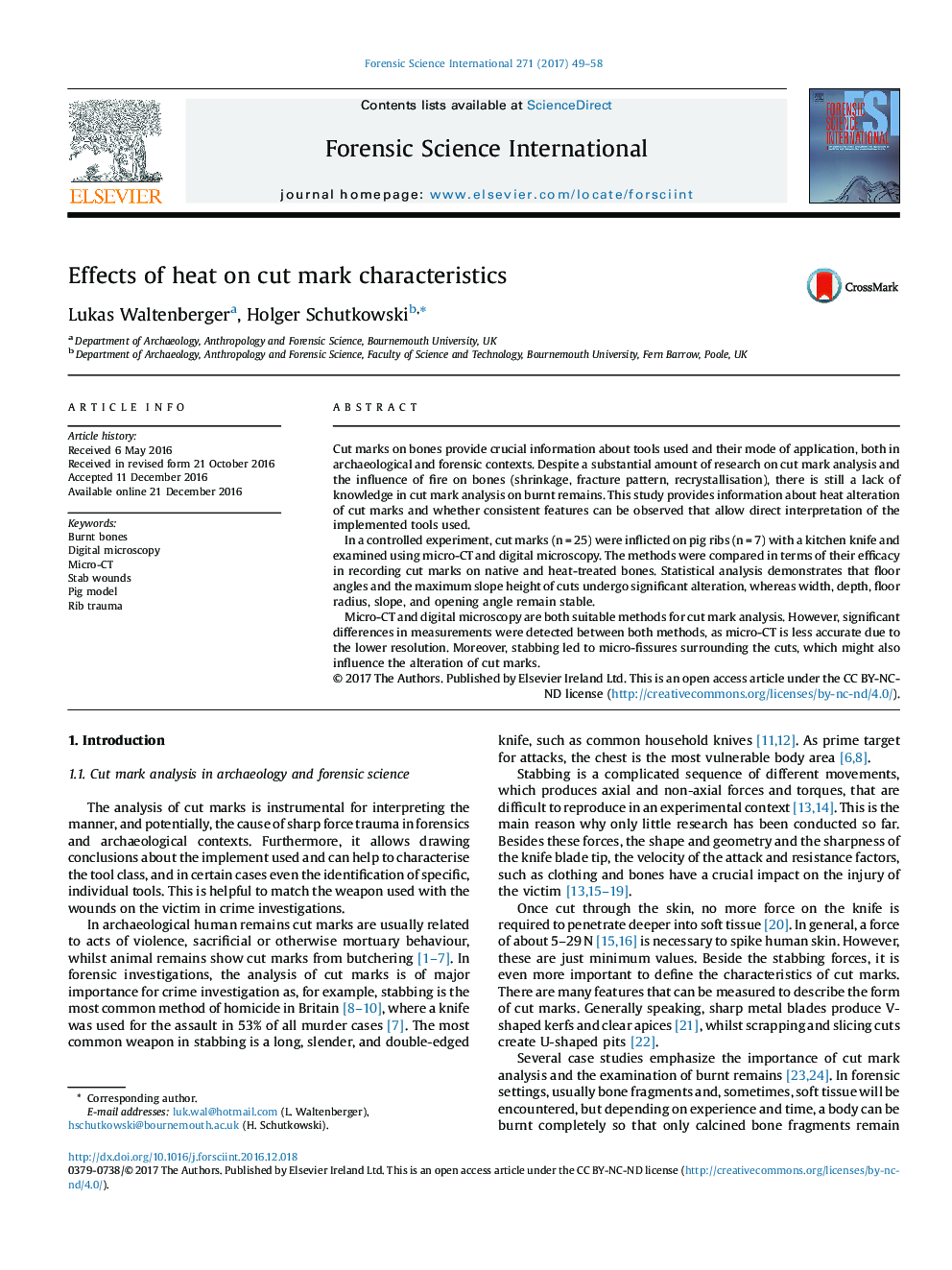| Article ID | Journal | Published Year | Pages | File Type |
|---|---|---|---|---|
| 6462040 | Forensic Science International | 2017 | 10 Pages |
â¢Systematic analysis of blade-induced cut mark features in burnt bone.â¢Most knife blade characteristics remain unaltered by heat, except for floor angle and slope height of cut.â¢Cut mark characteristics in burnt bone reflect the implement used and allow interpretation of the stabbing process.â¢Both digital microscopy and micro-CT are suitable tools to analyse cut marks and should, ideally, be used in combination.
Cut marks on bones provide crucial information about tools used and their mode of application, both in archaeological and forensic contexts. Despite a substantial amount of research on cut mark analysis and the influence of fire on bones (shrinkage, fracture pattern, recrystallisation), there is still a lack of knowledge in cut mark analysis on burnt remains. This study provides information about heat alteration of cut marks and whether consistent features can be observed that allow direct interpretation of the implemented tools used.In a controlled experiment, cut marks (n = 25) were inflicted on pig ribs (n = 7) with a kitchen knife and examined using micro-CT and digital microscopy. The methods were compared in terms of their efficacy in recording cut marks on native and heat-treated bones. Statistical analysis demonstrates that floor angles and the maximum slope height of cuts undergo significant alteration, whereas width, depth, floor radius, slope, and opening angle remain stable.Micro-CT and digital microscopy are both suitable methods for cut mark analysis. However, significant differences in measurements were detected between both methods, as micro-CT is less accurate due to the lower resolution. Moreover, stabbing led to micro-fissures surrounding the cuts, which might also influence the alteration of cut marks.
